Abstract
A recent study reported that motivated human male subjects were able voluntarily to inhibit penile erection in the presence of effective erotic stimulation (Laws and Rubin, 1969). However, because this study required attendance only to the display area of erotic stimuli, there was a possibility that inhibition resulted from their subjects not attending to the content of the stimuli. The present study utilized a procedure that guaranteed subjects' attendance to the content of the erotic stimulation, i.e., a description of the behavioral content of the erotic stimulus film. Nevertheless, every subject was able to inhibit penile erection almost as effectively as when no film description was required. Furthermore, the verbal description prevented the production of competing asexual stimuli; a technique that all subjects, in both the Laws and Rubin study (1969) and the present study, reported using to inhibit penile erection when no description was required. This suggests that although concentration on asexual stimuli may be the preferred method of reducing sexual arousal to erotic stimulation, penile erection can be inhibited by other methods.
Full text
PDF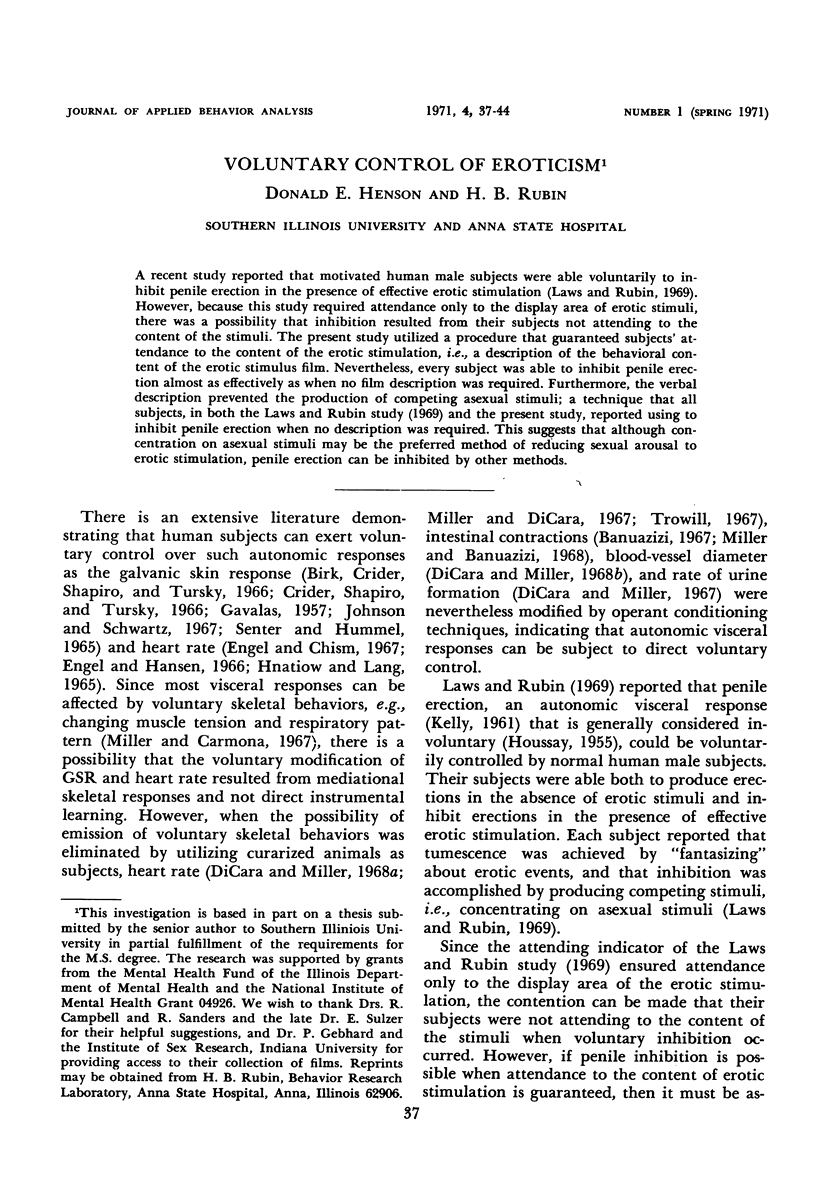
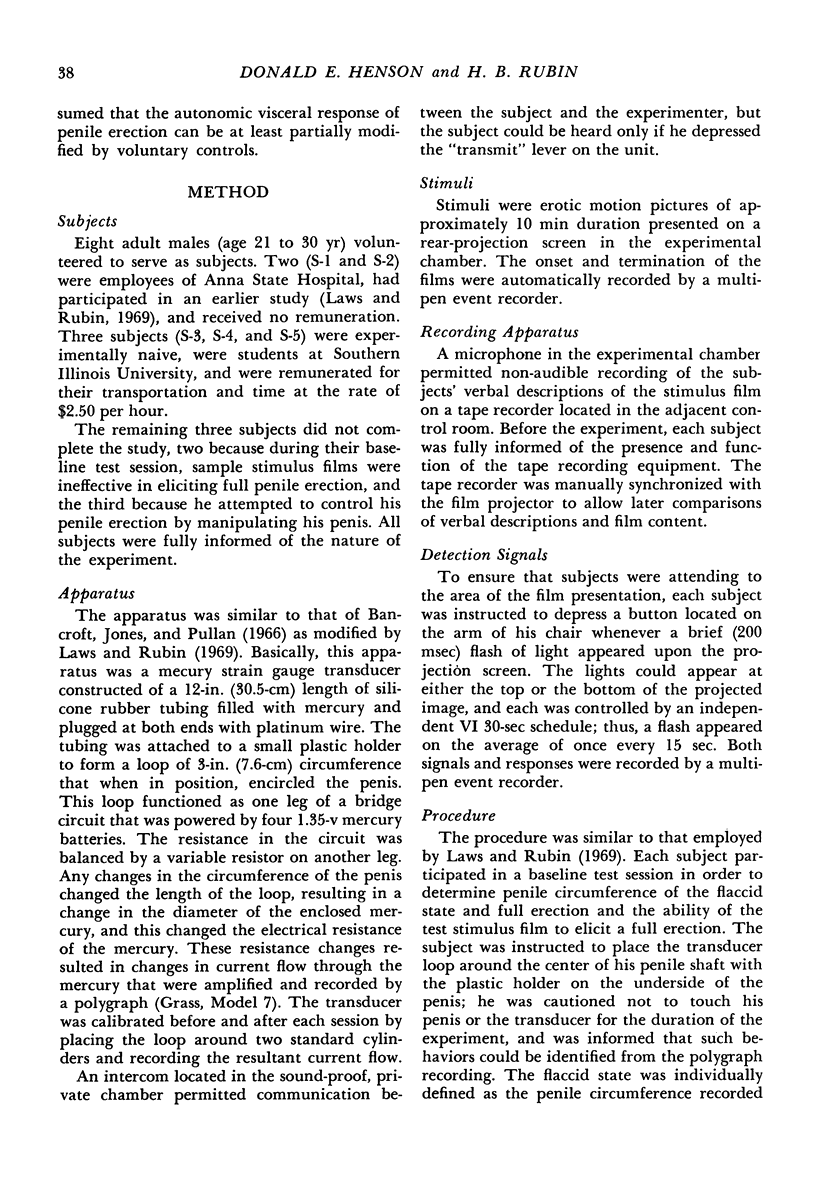

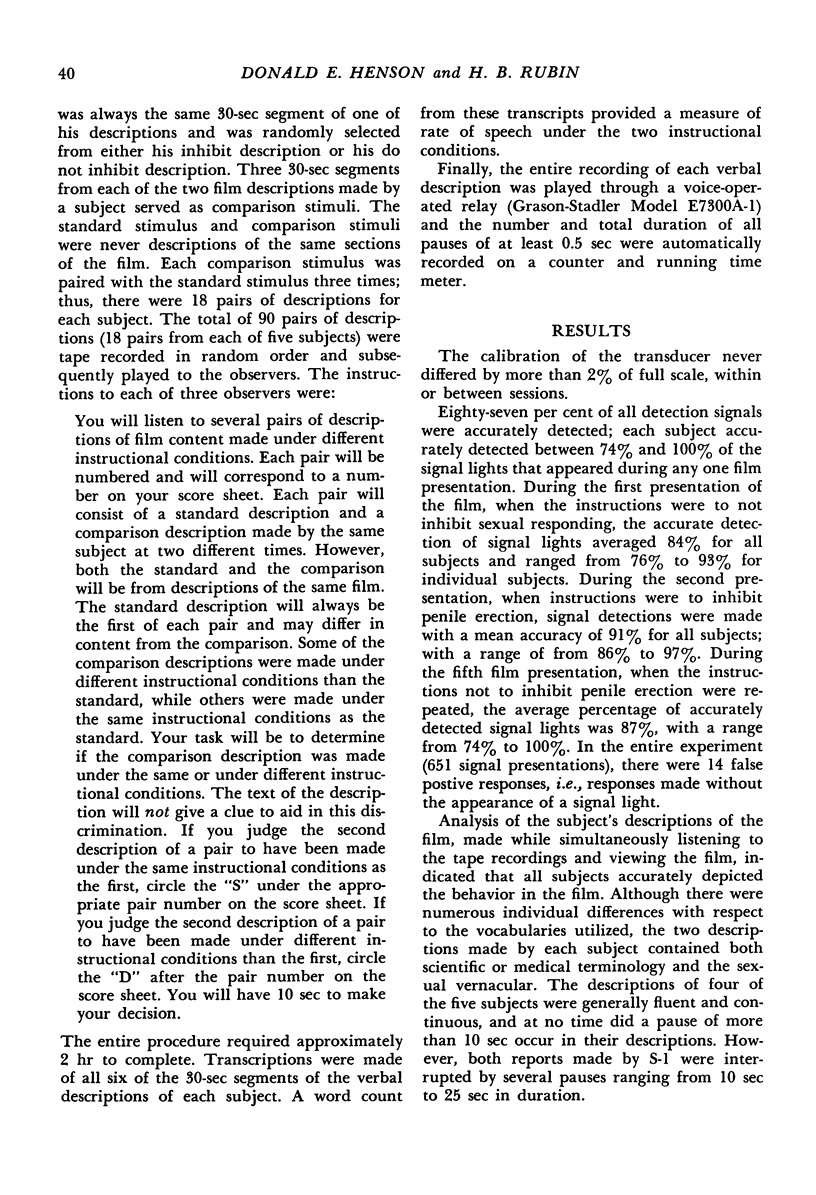
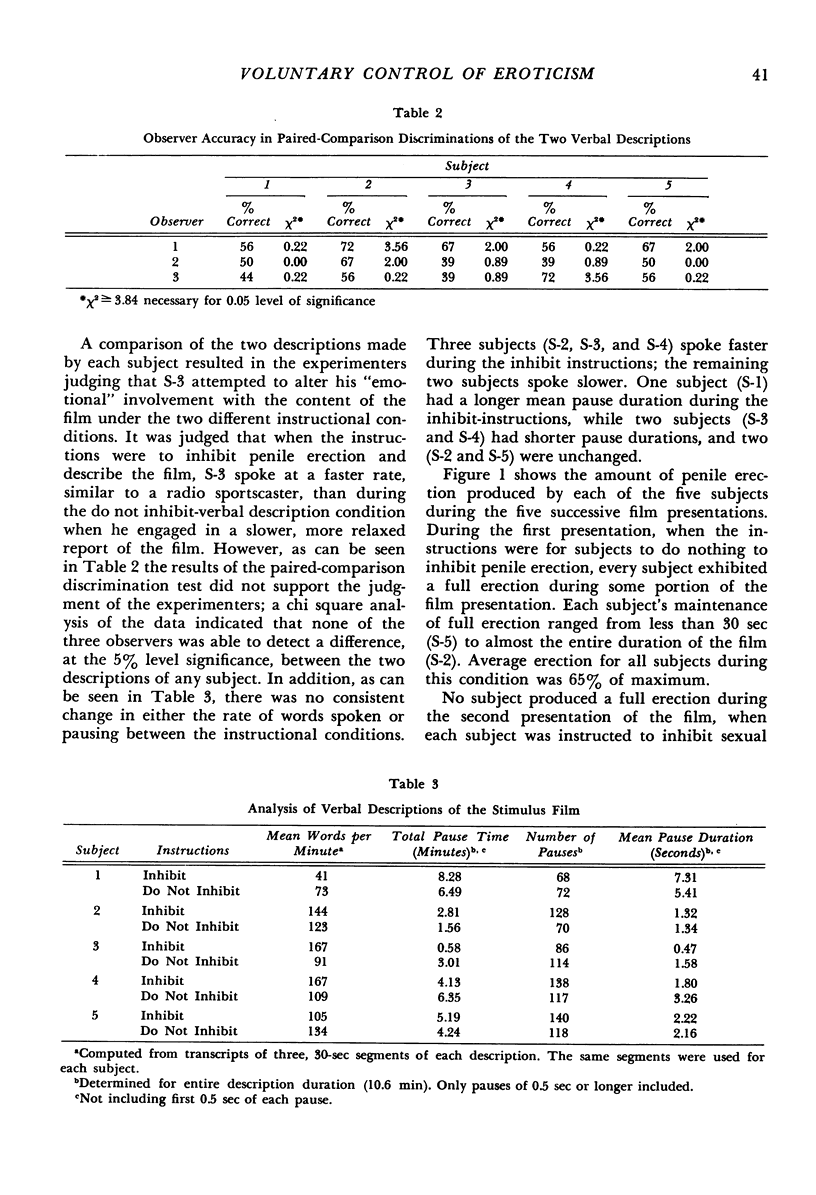
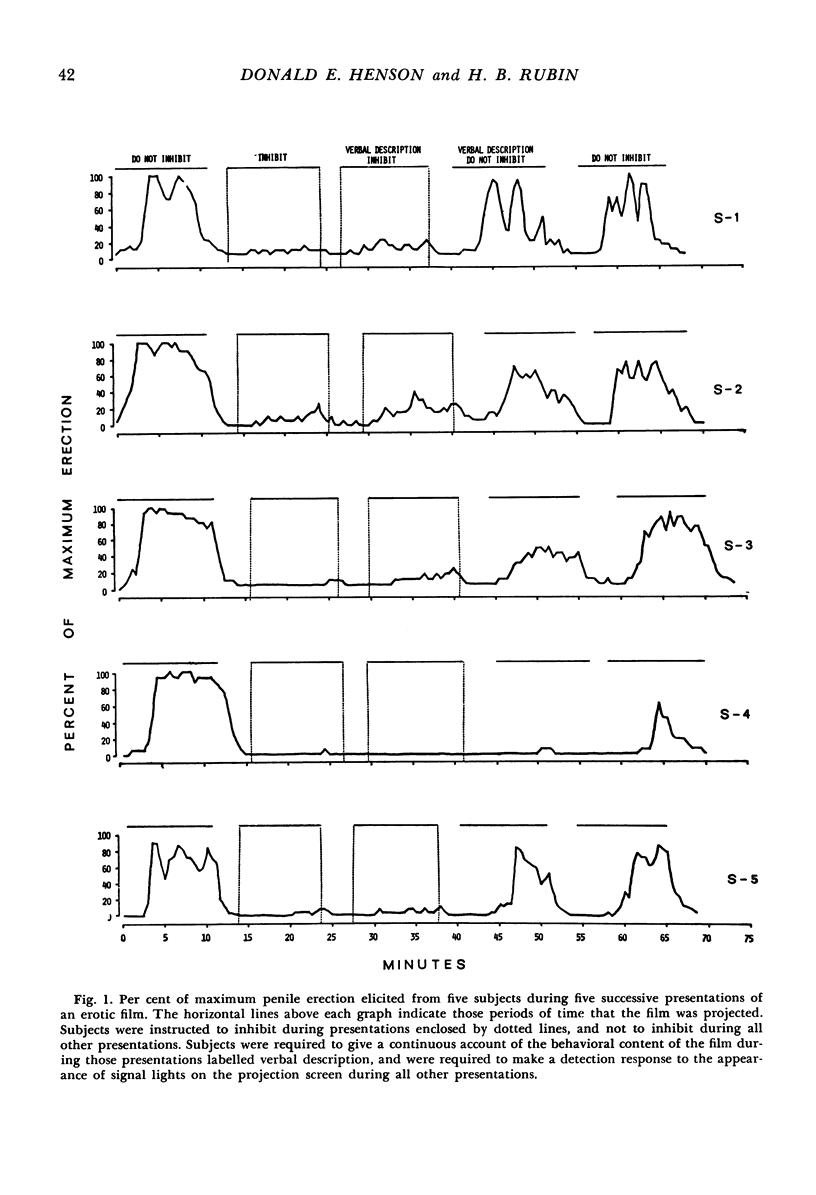
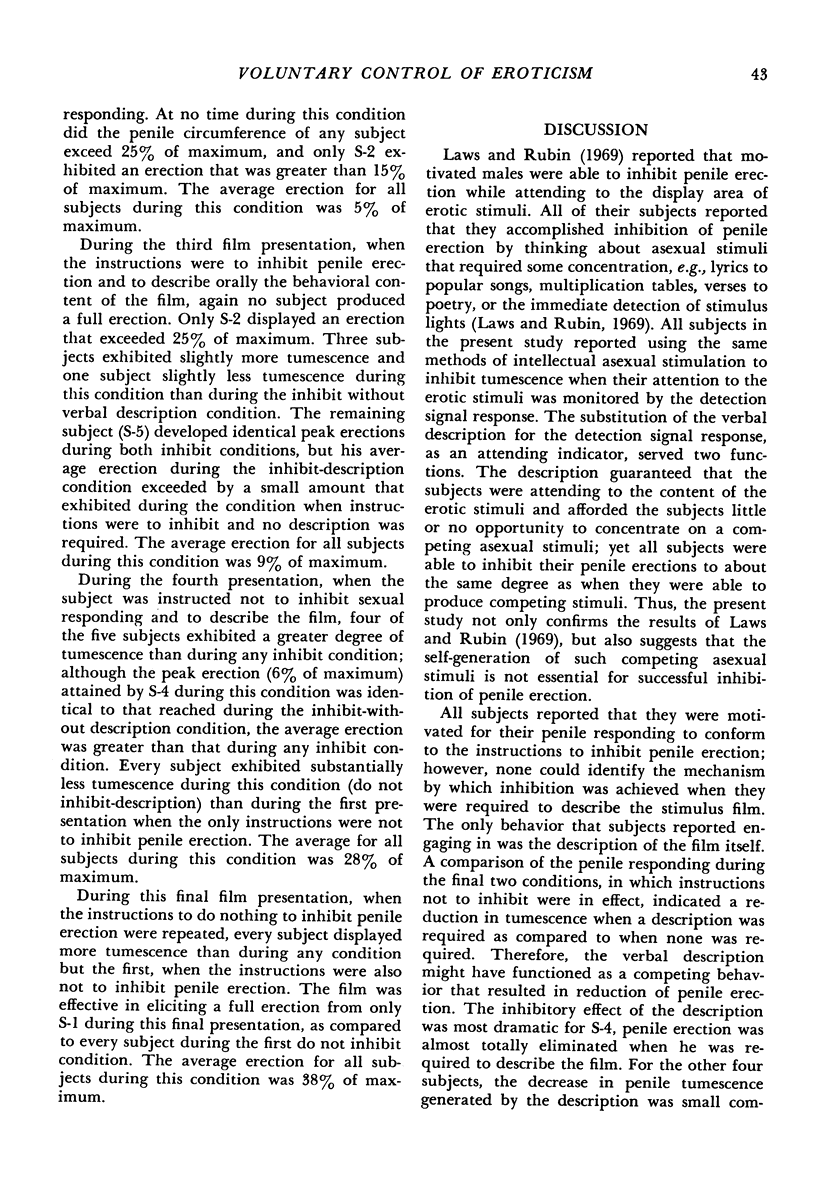
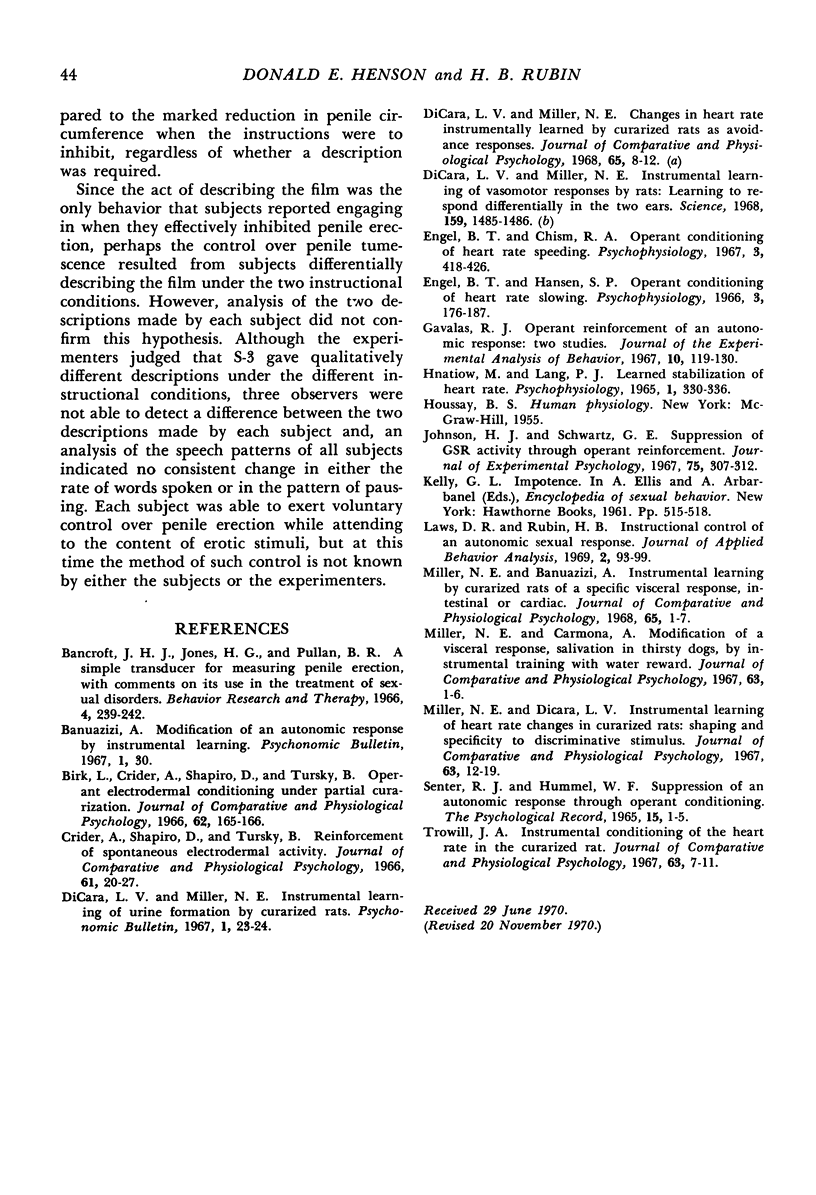
Selected References
These references are in PubMed. This may not be the complete list of references from this article.
- Bancroft J. H., Jones H. G., Pullan B. R. A simple transducer for measuring penile erection with comments on its use in the treatment of sexual disorders. Behav Res Ther. 1966 Aug;4(3):239–241. doi: 10.1016/0005-7967(66)90015-5. [DOI] [PubMed] [Google Scholar]
- Birk L., Crider A., Shapiro D., Tursky B. Operant electrodermal conditioning under partial curarization. J Comp Physiol Psychol. 1966 Aug;62(1):165–166. doi: 10.1037/h0023475. [DOI] [PubMed] [Google Scholar]
- DiCara L. V., Miller N. E. Changes in heart rate instrumentally learned by curarized rats as avoidance responses. J Comp Physiol Psychol. 1968 Feb;65(1):8–12. doi: 10.1037/h0025406. [DOI] [PubMed] [Google Scholar]
- DiCara L. V., Miller N. E. Instrumental learning of vasomotor responses by rats: learning to respond differentially in the two ears. Science. 1968 Mar 29;159(3822):1485–1486. doi: 10.1126/science.159.3822.1485. [DOI] [PubMed] [Google Scholar]
- Engel B. T., Chism R. A. Operant conditioning of heart rate speeding. Psychophysiology. 1967 Apr;3(4):418–426. doi: 10.1111/j.1469-8986.1967.tb02728.x. [DOI] [PubMed] [Google Scholar]
- Engel B. T., Hansen S. P. Operant conditioning of heart rate slowing. Psychophysiology. 1966 Oct;3(2):176–187. doi: 10.1111/j.1469-8986.1966.tb02693.x. [DOI] [PubMed] [Google Scholar]
- Gavalas R. J. Operant reinforcement of an autonomic response: two studies. J Exp Anal Behav. 1967 Jan;10(1):119–130. doi: 10.1901/jeab.1967.10-119. [DOI] [PMC free article] [PubMed] [Google Scholar]
- Hnatiow M., Lang P. J. Learned stabilization of cardiac rate. Psychophysiology. 1965 Apr;1(4):330–336. doi: 10.1111/j.1469-8986.1965.tb03265.x. [DOI] [PubMed] [Google Scholar]
- Johnson H. J., Schwartzge Suppression of GSR activity through operant reinforcement. J Exp Psychol. 1967 Nov;75(3):307–312. doi: 10.1037/h0025064. [DOI] [PubMed] [Google Scholar]
- Laws D. R., Rubin H. B. Instructional control of an autonomic sexual response. J Appl Behav Anal. 1969 Summer;2(2):93–99. doi: 10.1901/jaba.1969.2-93. [DOI] [PMC free article] [PubMed] [Google Scholar]
- Miller N. E., Banuazizi A. Instrumental learning by curarized rats of a specific visceral response, intestinal or cardiac. J Comp Physiol Psychol. 1968 Feb;65(1):1–7. doi: 10.1037/h0025407. [DOI] [PubMed] [Google Scholar]
- Miller N. E., Carmona A. Modification of a visceral response, salivation in thirsty dogs, by instrumental training with water reward. J Comp Physiol Psychol. 1967 Feb;63(1):1–6. doi: 10.1037/h0024170. [DOI] [PubMed] [Google Scholar]
- Miller N. E., DiCara L. Instrumental learning of heart rate changes in curarized rats: shaping, and specificity to discriminative stimulus. J Comp Physiol Psychol. 1967 Feb;63(1):12–19. doi: 10.1037/h0024160. [DOI] [PubMed] [Google Scholar]
- Trowill J. A. Instrumental conditioning of the heart rate in the curarized rat. J Comp Physiol Psychol. 1967 Feb;63(1):7–11. doi: 10.1037/h0024162. [DOI] [PubMed] [Google Scholar]


